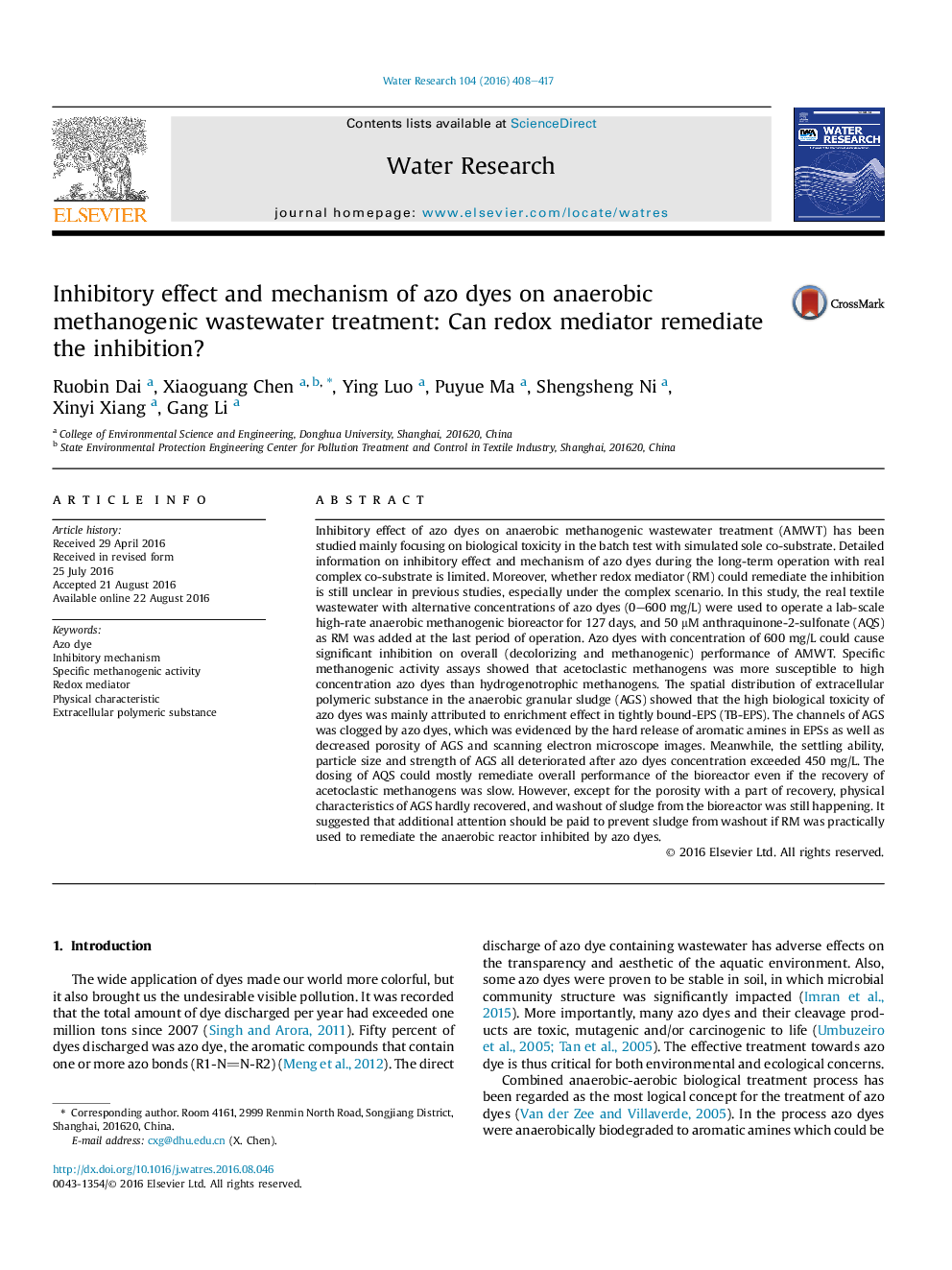| کد مقاله | کد نشریه | سال انتشار | مقاله انگلیسی | نسخه تمام متن |
|---|---|---|---|---|
| 6364758 | 1623064 | 2016 | 10 صفحه PDF | دانلود رایگان |
- Inhibitory mechanism of azo dyes on AMWT was analyzed biologically and physically.
- High biological toxicity of azo dyes was attributed to enrichment effect in TB-EPS.
- Channels of anaerobic granular sludge was physically blocked by azo dyes.
- Dosing of AQS mostly remediated overall performance of the bioreactor.
- Dosing of AQS hardly remediated physical characteristics of the sludge.
Inhibitory effect of azo dyes on anaerobic methanogenic wastewater treatment (AMWT) has been studied mainly focusing on biological toxicity in the batch test with simulated sole co-substrate. Detailed information on inhibitory effect and mechanism of azo dyes during the long-term operation with real complex co-substrate is limited. Moreover, whether redox mediator (RM) could remediate the inhibition is still unclear in previous studies, especially under the complex scenario. In this study, the real textile wastewater with alternative concentrations of azo dyes (0-600 mg/L) were used to operate a lab-scale high-rate anaerobic methanogenic bioreactor for 127 days, and 50 μM anthraquinone-2-sulfonate (AQS) as RM was added at the last period of operation. Azo dyes with concentration of 600 mg/L could cause significant inhibition on overall (decolorizing and methanogenic) performance of AMWT. Specific methanogenic activity assays showed that acetoclastic methanogens was more susceptible to high concentration azo dyes than hydrogenotrophic methanogens. The spatial distribution of extracellular polymeric substance in the anaerobic granular sludge (AGS) showed that the high biological toxicity of azo dyes was mainly attributed to enrichment effect in tightly bound-EPS (TB-EPS). The channels of AGS was clogged by azo dyes, which was evidenced by the hard release of aromatic amines in EPSs as well as decreased porosity of AGS and scanning electron microscope images. Meanwhile, the settling ability, particle size and strength of AGS all deteriorated after azo dyes concentration exceeded 450 mg/L. The dosing of AQS could mostly remediate overall performance of the bioreactor even if the recovery of acetoclastic methanogens was slow. However, except for the porosity with a part of recovery, physical characteristics of AGS hardly recovered, and washout of sludge from the bioreactor was still happening. It suggested that additional attention should be paid to prevent sludge from washout if RM was practically used to remediate the anaerobic reactor inhibited by azo dyes.
367
Journal: Water Research - Volume 104, 1 November 2016, Pages 408-417
